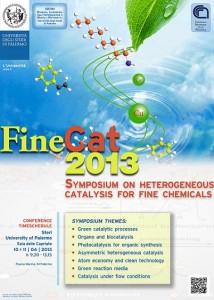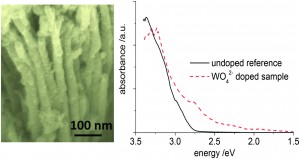The second “FineCat – Symposium on heterogeneous catalysis for fine chemicals” was held in Palermo, Italy, on April 10-11, 2013. With delegates coming from all over the world, it was two intense days of lectures and poster presentations. Some of the topics covered included biomass conversion, flow chemistry, catalysis with metal nanoparticles, heterogeneous photocatalysis and doped hybrid silicas. A poster prize was also offered, which Natcha Wongpraphairoat from Chulalongkorn University, Thailand, won with her poster on the the catalytic conversion of glycerol to propylene glycol over supported copper/ZnO catalysts.
To find out more about the conference, a more detailed report can be found here, or you can download the conference report in pdf.
Next year’s conference will be held Sicily on April 9-10, 2014, with further details here. So if you are interested in catalysis, why not consider a working holiday in Sicily next year?












![Highly efficient isocyanate-free microwave-assisted synthesis of [6]-oligourea Highly efficient isocyanate-free microwave-assisted synthesis of [6]-oligourea](https://blogs.rsc.org/cy/files/2013/04/c3cy00117b-300x75.jpg)
